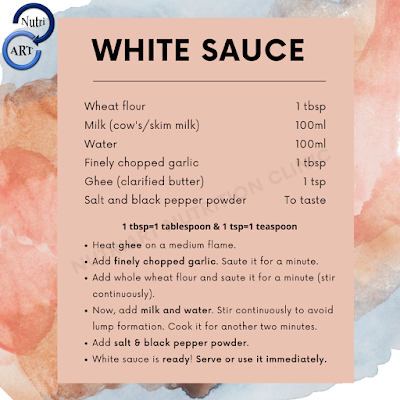Editor- Khushboo Pathak
The twentieth century saw a remarkable upsurge of research on drugs, with major advances in the treatment of bacterial and viral infections, heart disease, stomach ulcers, cancer, and mental illnesses. These, along with the introduction of the oral contraceptive, have altered all of our lives. There has also been an increase in the recreational use and abuse of drugs in the Western world.
In the fields of Medicine, Biotechnology and Pharmacology, drugs are discovered and/or designed by the process called drug discovery.
Drug is a chemical substance other than food used in the treatment, prevention or diagnosis of disease or used to enhance physical or mental well-being.
The action of drugs on the human body is called Pharmacodynamics and what the body does with the drug is called Pharmacokinetics.
According to pharmacological action drugs are classified as follows:
A) Chemotherapeutic agents - used to cure infectious diseases and cancer. (Sulfa drugs, Antibiotics).These act by killing or weakening foreign organisms such as bacteria, viruses.
B) Pharmacodynamic agents - used in non-infectious diseases (Hallucinogenic, Sedatives)
C) Miscellaneous agents (Narcotic Analgesics, Local An-aesthetics)
Drugs act by stimulating or depressing normal physiological functions. Drugs can be made from various sources like Microbial metabolites, Marine invertebrates etc.
The drugs that enter the human body tend to stimulate certain receptors, ion channels, act on enzymes or transporter proteins. As a result, they cause the human body to react in a specific way.
l. Enzyme Inhibition: Enzyme inhibition may be reversible or non reversible; competitive or non-competitive. Antimetabolites may be used which mimic natural metabolites.
2. Drug-Receptor Interaction: A receptor is the specific chemical constituents of the cell with which a drug interacts to produce its pharmacological effects.
Drugs may bind to a specific receptor, possibly preventing naturally occurring chemicals from binding to the receptor. In so doing, if a drug enhances cell activity, it is called an Agonists drug; if it blocks cell activity, it is called an Antagonists drug.
Once the receptors are activated, they either trigger a particular response directly on the body, or they trigger the release of hormones and/or other endogenous drugs in the body to stimulate a particular response.
3. Non-specific Interactions: Drug can also act exclusively by physical means outside of cells such as external surfaces of skin and gastrointestinal tract. Drugs also act outside of cell membranes by chemical interactions.
How do drugs act....???
 Step 1. Drug from tablets or capsules enters in the stomach and intestines.For some drugs, the amount of acid in the stomach, or the amount of food in the stomach, changes the amount of drug that is absorbed. This is the reason that some drugs have "food requirements", or why some drugs have warnings not to take antacids along with the drug.
Step 1. Drug from tablets or capsules enters in the stomach and intestines.For some drugs, the amount of acid in the stomach, or the amount of food in the stomach, changes the amount of drug that is absorbed. This is the reason that some drugs have "food requirements", or why some drugs have warnings not to take antacids along with the drug.
Step 2. Drug travels in the bloodstream and it goes into Tissues and Body Fluids. Drug characteristics, tissue properties and blood flow determine this distribution.
Step 3. Now, the drug get metabolized by living organisms through specialized enzymatic systems. Its rate is an important determinant of the duration and intensity of the pharmacological action of drugs. This metabolism can result in toxication or intoxication. Quantitatively, the smooth endoplasmic reticulum of the liver cell is the principal organ of drug metabolism. The reason is, it is a large organ, it is the first organ per-fused by chemicals absorbed in the gut, and there are very high concentrations of most drug-metabolizing enzyme systems comparative to other organs.
Step 4. Now, the body gets the drug out by passing the drug into the urine (via the kidneys) or stool (via the liver).
We know from basic science that chemicals and compounds react with each other. So, it’s very important to understand that the same chemical can be a medicine and a poison too, depending on conditions of use and the person using it. Pharmacology drug do not produce a single effect. The primary effect is the desired therapeutic effect. Other effect beside the desired effect which may be either beneficial or harmful is the secondary effect/side-effect. Side effects can occur when commencing, decreasing/increasing dosages, or ending a drug or prescription routine.
 Drugs have to be prescribed by a doctor because some of them are quite addictive. That is why most doctors don’t renew a prescription unless they examine the patient to make sure that he or she isn't getting addicted. So, rather telling your doctor that you need a particular drug, simply describe your symptoms. If you need a drug, trust your doctor to prescribe it for you.
Drugs have to be prescribed by a doctor because some of them are quite addictive. That is why most doctors don’t renew a prescription unless they examine the patient to make sure that he or she isn't getting addicted. So, rather telling your doctor that you need a particular drug, simply describe your symptoms. If you need a drug, trust your doctor to prescribe it for you.



























